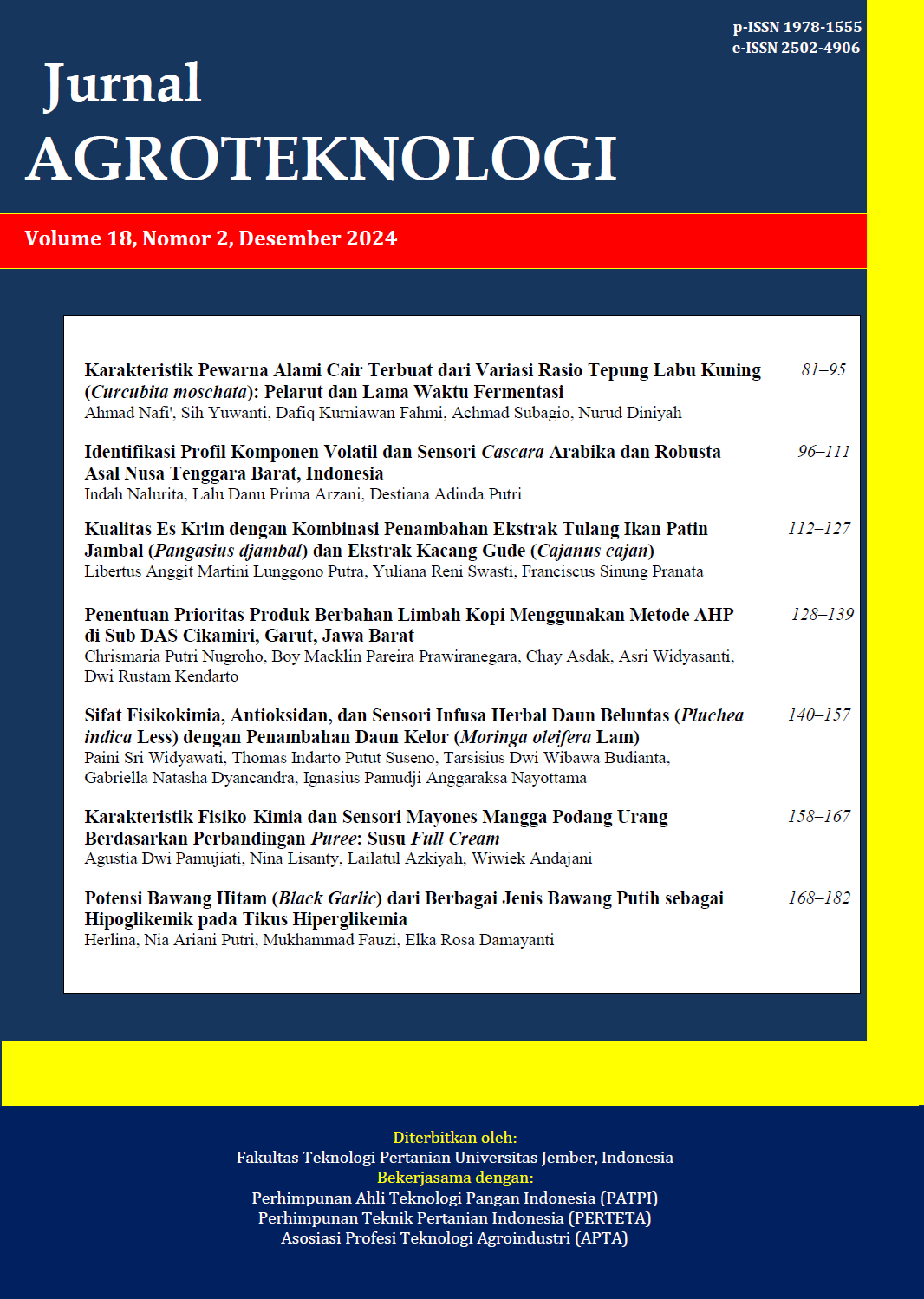Identifikasi Profil Komponen Volatil dan Sensori Cascara Arabika dan Robusta Asal Nusa Tenggara Barat, Indonesia
Profile Identification of The Volatile Components and Sensory of Cascara Arabica and Robusta from West Nusa Tenggara, Indonesia
DOI:
https://doi.org/10.19184/j-agt.v18i2.46651Abstract
High coffee production is followed by a significant amount of coffee husk waste. However, the processing of coffee husk waste has not been fully optimized due to the lack of information regarding the unique characteristics of cascara from West Nusa Tenggara (NTB), Indonesia. The volatile components present in cascara can be measured and used as sensory threshold indicators. Therefore, this study aimed to identify the volatile and sensory components and determine the distinctive aroma and taste characteristics of cascara from arabica and robusta coffee. The research used a completely randomized design with GC-MS analysis and rate all that apply (RATA) sensory evaluation. The results showed that arabica var. Rinjani cascara contains the most dominant compounds, including caffeine (22.37% retention area) and 2,3-dihydro-3,5-dihydroxy-6-methyl-4H-pyran-4-one (13.32% retention area). Robusta var. Rinjani cascara is dominated by caffeine (14.71% retention area) and quinic acid (13.92% retention area). Arabica var. Tambora cascara contains caffeine (40.82% retention area) and quinic acid (11.67% retention area), while robusta var. Tambora cascara has quinic acid (29.74% retention area) and mome inostol (22.98% retention area) as the most dominant compounds. Based on sensory profiles, arabica var. Rinjani cascara has a fruity, earthly, and green aroma with sour, sweet, and bitter flavors. Arabica var. Tambora cascara has a similar aroma with a sour, sweet, and bitter taste. Robusta var. Rinjani cascara features a floral, fruity, earthly, and green aroma with a similar taste. Meanwhile, robusta var. Tambora cascara has an earthly and green aroma with a bitter, sour taste. The RATA taste intensity test showed that robusta var. Rinjani cascara was sweeter than robusta var. Tambora. The sweet taste of cascara enhances its hedonic value, making it more preferred by panelists. This study provides the valuable sensory profile insights of cascara from NTB and references for developing value-added food products.
Keywords: cascara, GC-MS, hedonic, RATA
Downloads
Downloads
Published
Issue
Section
License
Copyright (c) 2024 Indah Nalurita, Lalu Danu Prima Arzani, Destiana Adinda Putri

This work is licensed under a Creative Commons Attribution-ShareAlike 4.0 International License.
Jurnal Agroteknologi has CC-BY-SA or an equivalent license as the optimal license for the publication, distribution, use, and reuse of scholarly work. Authors who publish with this journal retain copyright and grant the journal the right of first publication with the work simultaneously licensed under a Creative Commons Attribution-ShareAlike 4.0 International License that allows others to share the work with an acknowledgment of the work's authorship and initial publication in this journal.









.png)
